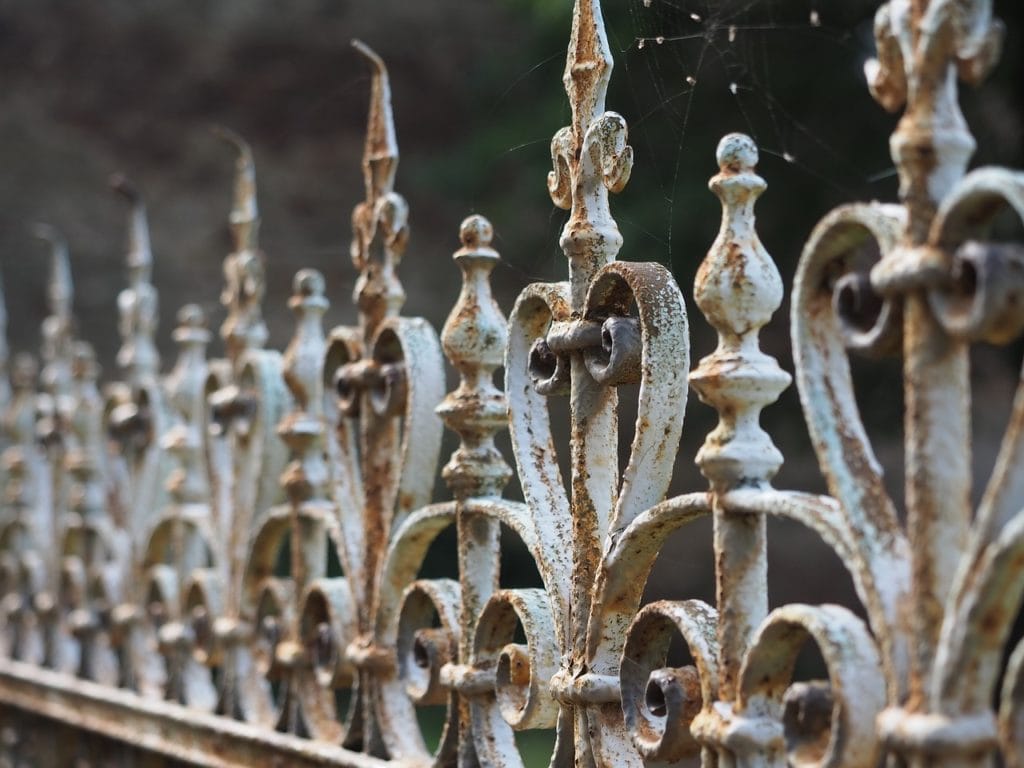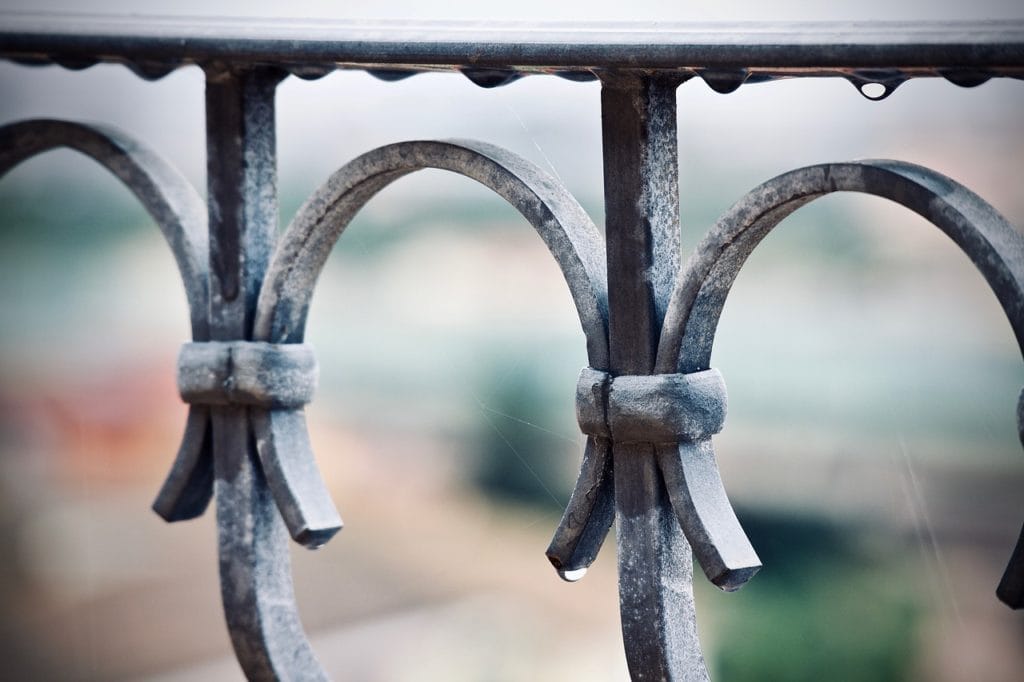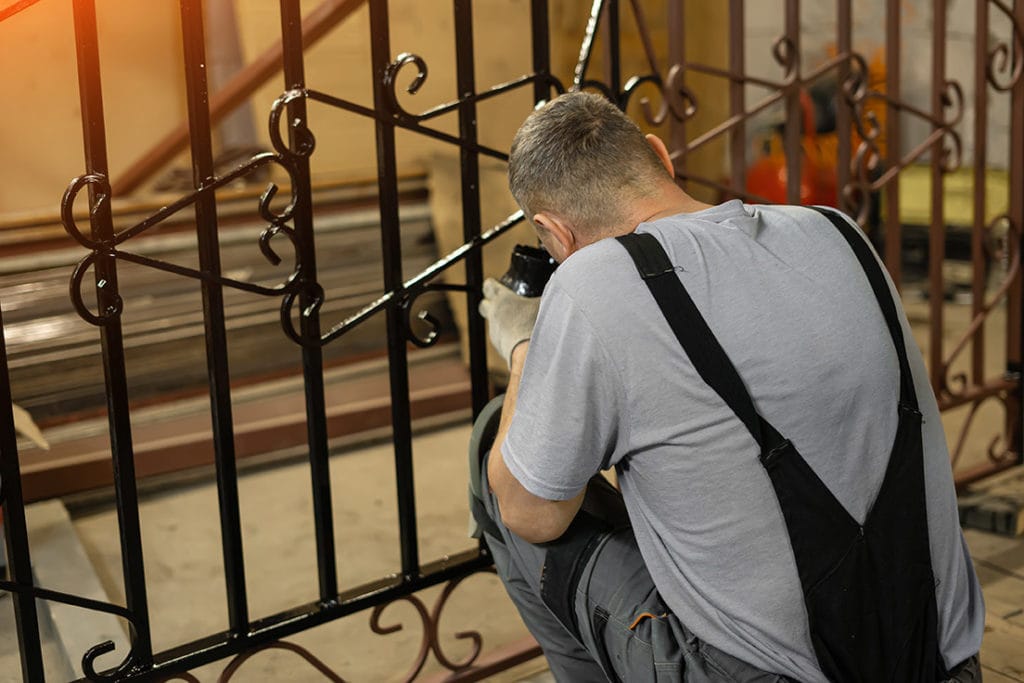How to Repair Wrought Iron without Welding – Quick & Easy
Last Updated on

Wrought iron is typically used for fences, handrails, and other home metal ornamentation. It does have durability, but if excess pressure is applied, it can break because it is made from cast metal, which is porous. The porousness of the metal can determine its overall strength. Aluminum is an example of a metal that is extremely porous.
Why would you want a metal that is porous? The answer as it applies to wrought iron is simple. It’s malleable. The metal is heated and bent to the beautifully ornamented shapes that create an artsy aesthetic to your wine rank or stair rail. The downside is that it can break. So, here’s how to fix it, and you don’t even need a welder to do it.
Gather Materials
For most damaged pieces of wrought iron, you will be able to fix it with epoxy putty. Here’s a list of some materials that you will need to get started.
- Nitrile work gloves
- Epoxy putty
- Old credit card or piece of hard plastic
- Work clamps (various types depending on the break)
- 600 grit sandpaper
- Angle grinder
- Work rags
- Acetone or another solvent
Prepare the Surface
In many cases, exposure to the elements is what causes breaks and cracks in wrought iron. Not that weather in and of itself will wear away at your stair rail, but water puddling up or resting against your piece of wrought iron can eventually cause it to rust. In any case, if you find rust you definitely need to clean the rust off of the area to be bonded. If you don’t do the time in prep-work, you are only going to have more rust later.
Take some 600-grit sandpaper and sand the surface to remove all grease, rust, dirt, and anything that would prevent a strong bond. In some cases, an angle grinder might be helpful. Just don’t get too crazy and be gentle. Applying the grinder too forcefully can cause a gouge in the base metal. After you’ve sanded it down, take a clean shop rag with some acetone or another heavy solvent and wipe down the surface. Be sure to wear gloves.
- See also: Where to Buy Scrap Metal for Welding

Preparing and Applying the Epoxy Putty
Now that you have prepared the surface for bonding, you can begin to apply the epoxy putty. Since J-B Weld is one of the most highly recommended and well-reputed epoxies, we will be covering specifically how to use this brand. There are other epoxy brands and instructions will vary. J-B Weld is known as the ‘Original Cold-Weld Formula.’ It will make a bond that is as strong as steel when it cures. This stuff is incredible and easy to apply.
It consists of two components in two different tubes. There is a base and an activator. How much you need to mix will depend on the size of your repair. It’s a good idea to start somewhat conservatively in this regard. You can always mix more if you need it. Squeeze some of the black base onto an old piece of cardboard. Then squeeze an equal amount of the white activator. Begin to mix it together. An old credit card or piece of hard plastic works great for this. Mix it until it reaches a good consistency and there are no longer any black or white streaks in the mixture. It should be gray throughout.
Use your credit card or piece of plastic you stirred with and take some of the mixture and apply it to the area you wish to bond on both sides of the joint. Once you think that you have applied enough epoxy, use a clamp or two to hold the two pieces of wrought iron together. Make sure that the clamps are secure so as to ensure that it cures properly.

Clean-up
After you have applied the epoxy and clamped the pieces of wrought iron together, you may notice that you have some excess. This is due to the clamp pushing some of the compound out of the joint. While it is still curing, you can clean some of it up with a rag. Just be sure to not remove too much or you will not have as strong of a bond.
Then after it has cured and is dry, take your sandpaper and sand off any other excess. You could also use a sanding disk on an angle grinder if you have the proper attachments. This will save some time.
Lastly, it may be a good idea to spray some cold-galvanizing spray or repaint the area of repair to prevent it from rusting again.

Conclusion
Epoxy is one of the easiest ways to repair broken wrought iron without welding. However, if you are fixing a more ornamented piece that is hard to clamp, it might be worth your while to consider a quick weld as it will set in place quicker. That being said, most breaks in wrought iron can be repaired with epoxy.
Featured Image Credit: Pixabay
